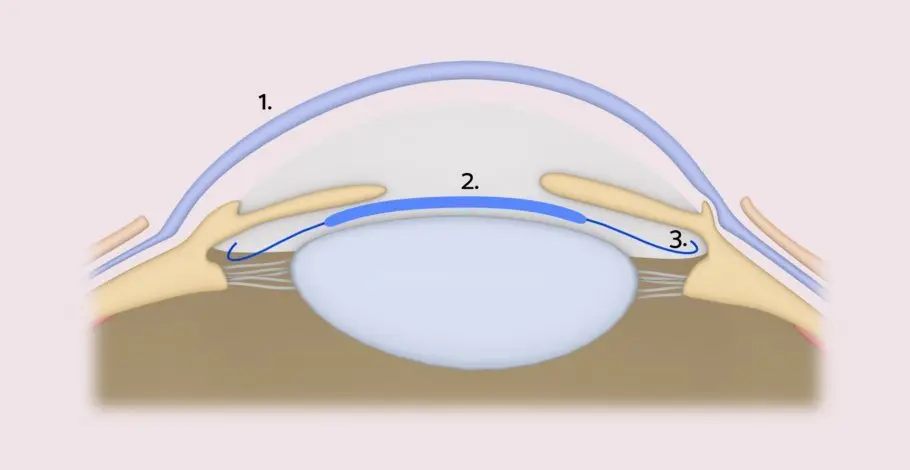Other Treatment Methods

© Getty Images
Phakic intraocular lenses
They are suitable for patients who suffer from astigmatism in conjunction with nearsightedness or possibly also farsightedness The doctor inserts the lens in addition to the patient's own natural lens. The procedure is particularly suitable for patients with severe vision problems or for people for whom correction of vision problems by laser is not an option. The artificial lens has a supportive function for the body's own: light rays are filtered by it, projecting the desired exact and sharp image onto the retina. PIOL wearers do not need glasses or contact lenses.
There are two common types of PIOL: The anterior chamber lens is inserted by the surgeon between the iris and cornea, and the posterior chamber lens is placed between the natural lens and the iris.
Procedure of the Operation
Under local anesthesia, the surgeon inserts the artificial lens through a tiny incision. Soft lenses are folded, requiring only an incision approximately three millimeters wide. After inserting the lens, no stitches are needed, the healing process progresses quickly, and no scar remains.
Experts for this Treatment Method
All Experts in this Department
Show All
- Modern Ophthalmology
Dr. Mirka R. Höltzermann
Augenpraxis Dr. Höltzermann, Dr. von Schnakenburg, Augenpraxis Dres. Höltzermann & von Schnakenburg
- Modern Ophthalmology
Dr. med. Ilya Kotomin
Smile Eyes Leipzig
- Modern Ophthalmology
Priv.-Doz. Dr. med. Daniel Pilger
Smile Eyes Berlin
- Modern Ophthalmology
Raphael Neuhann (FEBO)
Opthalmologikum Dr. Neuhann / Augentagesklinik am Marienplatz
- Modern Ophthalmology
Dr. med. Tabitha Neuhann
Opthalmologikum Dr. Neuhann / Augentagesklinik am Marienplatz
- Modern Ophthalmology










